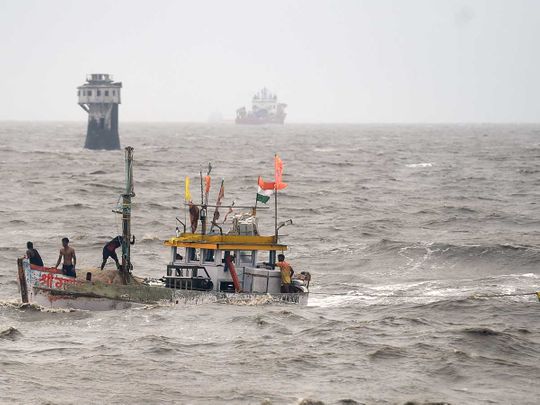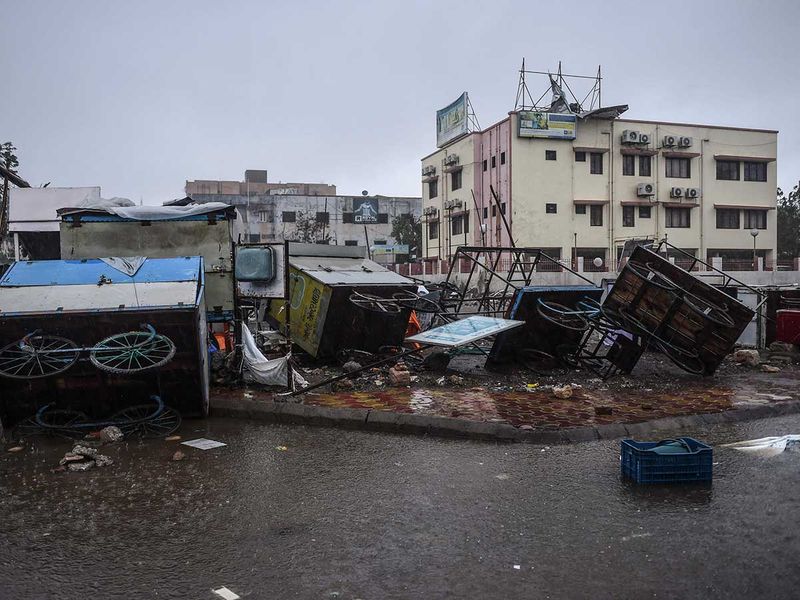
Muscat: Oman is closely monitoring the situation arising out of the cyclonic storm that has developed in the Arabian Sea.
Even though any impact of Tuktae on Oman has been ruled out, the meteorological office is monitoring the situation and issuing alerts on the developments.
On May 16, Oman’s National Multi Hazard Early Warning Centre at the General Directorate of Meteorology (MET) issued an alert that the tropical cyclone would make landfall in India without impacting the Sultanate. However, high waves up to 4 metres were expected along with inundation of low-lying coastal areas with sea water.
The Civil Aviation Authority, Oman, also advised the general public to keep abreast of the development following the verified official handles of the weather authority.
This part of the year is generally characterized by formation of depression and low-pressure conditions over the Arabian Sea, the effect of which is felt in various parts of Oman as well.
A powerful cyclonic system, Tauktae, made landfall in the Indian state of Gujarat late Monday after barrelling up the Arabian Sea in the Indian Ocean. It is the equivalent of a Category 3 hurricane in the Atlantic and East Pacific Ocean basins and weakened after making landfall.
Here are several facts on why stronger cyclones are developing in the region.
What is a tropical cyclone?
Cyclones are low-pressure systems that form over warm tropical waters, with gale-force winds near the centre. The winds can extend hundreds of kilometres from the eye of the storm.
Sucking up vast quantities of water, they often produce torrential rains and flooding resulting in major loss of life and property damage.
They are also known as hurricanes or typhoons, depending on where they originate in the world, when they reach sustained winds of at least 119 kilometres per hour.
Tropical cyclones (hurricanes) are the most powerful weather events on Earth, according to NASA.
Why is climate change fuelling them?
Oceans soak up more than 90 per cent of the heat generated by greenhouse gases, leading to rising water temperatures.
As cyclones draw their energy from warm waters, the rising temperatures are causing intense storms to become more common, experts say.

“Now what is happening - the Arabian Sea temperatures, the ocean’s surface temperatures - are warming rapidly,” climate scientist Roxy Mathew Koll of the Indian Institute of Tropical Meteorology told AFP.
Rising sea levels could also boost storm surges from cyclones, making them even more deadly and destructive.
Why are there more in the Arabian Sea?
Scientists say historically, the Arabian Sea averaged two or three cyclones, that were typically weak, in a year.
The Arabian Sea also previously experienced fewer severe cyclones than the Bay of Bengal off India’s eastern coast.
But rising water temperatures because of global warming is changing that, they said.
This is the first time since the start of satellite records in 1980 in India that there have been four consecutive years of pre-monsoon cyclones in the Arabian Sea.

“One of the reasons that we are seeing more and more storms and cyclones in the tropical regions, especially regions like Arabian Sea and all, is because of ocean warming, rapid ocean warming,” Koll said.
“The Arabian Sea is one of the fastest warming basins across the global oceans.”
Cyclones have been relatively rare in Gujarat, but they can be destructive and dangerous. The worst was in 1998 when more than 4,000 people died.
What else is making them more deadly?
Cyclones can unleash catastrophic storm surges - tsunami-like flooding - when they make landfall. They can be the deadliest part of a cyclone and are only partially affected by wind speeds.
The term “storm surge” refers to rising seas whipped up by a storm, creating a wall of water several metres higher than the normal tide level.
The large swells move faster than the cyclone and are sometimes spotted up to 1,000 kilometres ahead of a major storm.
The surge can extend for dozens of kilometres inland, overwhelming homes and making roads impassable.
A storm surge is shaped by a number of different factors, including storm intensity, forward speed, the size of a storm and the angle of approach to the coast.
The underlying features of the land at the coast, including bays and estuaries, are also at play.
In previous storms, people failed to flee because they did not grasp the surge’s deadly threat.
That was the case for 2013’s Super Typhoon Haiyan, which left 7,350 dead or missing in the central Philippines, primarily due to the surge.
A storm surge of up to four metres (13 feet) is likely to inundate some coastal districts of Gujarat during Tauktae’s landfall, according to the Indian Meteorological Department.
How bad was the damage in India?
At least 24 people were dead and almost 100 missing on Tuesday after a monster cyclone slammed into western India, compounding the country’s woes as it battles a devastating coronavirus surge.
Hundreds of thousands of people were left without power after Cyclone Tauktae hammered the Gujarat coast on Monday evening.
One support vessel serving oil rigs that were walloped by eight-metre waves off Mumbai sank and 96 of the 273 people who had been on board were missing, the Indian Navy said Tuesday. The defence ministry said 177 people were rescued, with operations continuing in “extremely challenging sea conditions”. Two other barges and an oil rig were also in trouble.
Is there a warning in Pakistan?
In Pakistan, the weather department has advised fishermen not to venture into the sea until May 19 because of the storm. Rains, with winds of 40 to 60 kilometers per hour in about half a dozen cities in the southern Sindh province, are likely, it added.








